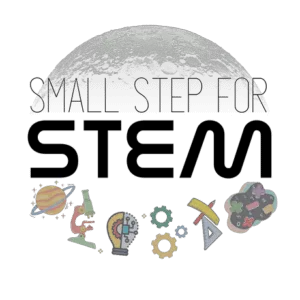Matching the number of objects to a number is a pretty important math concept for kids to learn. It’s likely that your child knows their numbers, but this activity is all about associating their knowledge of numbers with counting objects and one-to-one correspondence.
This experiment teaches children how to count and recognize numbers, which is the foundation for more advanced math concepts such as addition, subtraction, and multiplication.
In today’s post, we’ll go through this exciting math experiment for kids that parents can easily set up and do at home. This experiment is fun, engaging, and a great way to help your child develop their math skills. Let’s get started!

How to make the Number Recognition math experiment
Supplies you will need
For this experiment, you will need the following:
- A collection of small objects (such as beads, buttons, or toy animals)
- Paper
- Pen or pencil
- Scissors

Before you start
Remember to keep the game challenging but not too difficult, and to keep track of your child’s progress (so you know what to practice).
Instructions
Here is how to do the Number Recognition math experiment:
Step 1: Create your numbers

Using your paper, pen or pencil, and scissors, create your number tiles.
You can write out as many numbers as your child is comfortable with, but I do suggest starting with 1-10 to start with, then building from there.
Once everything is cut out, make a pile of these tiles on the table or floor where you will do the experiment, making sure you can see every number.

Get your child involved: If your child can use toddler scissors, have them help you create the number tiles. Even better, if they can help write out the numbers, take the time to allow them to do it!
Step 2: Choose a number
Have your child pick out the first number from the pile of number tiles.
They should be able to identify the number by looking at the number tile. If they can’t, it’s totally fine to offer some help to start with.
Get your child involved: Let your child take over the experiment here! They can pick out the number they want to identify and do the next step too.
Step 3: Find the corresponding number of objects from the pile

In a separate pile on the table or floor should be the objects that you chose together.
Once your child has chosen the number they want to start with, have them pick out that many objects from the pile of objects.
Count the number of objects together to ensure everything looks good.
You could give your child a pile of objects and have them count and find the corresponding number. Either way (or both!) work great.

Step 4 (optional): Turn up the intensity!
Here, you can choose to add more objects and number tiles to the piles.
If you’re looking for other ways to increase the intensity, here are some ideas:
- Use a timer – set a timer and have them count the objects and identify the number tile within a time limit
- Mix up the objects – instead of only using small objects, use a variety of big and small objects of different colors. This will add a level of problem-solving to the experiment.
- See how many they can find in a set time – similar to using a timer, see how many numbers they can identify within a 2-minute timer
The math behind the Number Recognition math experiment
This experiment teaches:
- Number recognition
- Counting
- Problem-solving
How it works
This experiment is a fun and engaging way to teach your child a fundamental math skill: identifying numbers and applying those numbers to a quantity.
In this experiment, we are associating a number (which we have to identify first!) with how many objects are in the pile. It helps to solidify one-to-one correspondence as well as identifying their numbers.
Number recognition
By matching the number of objects to a number flashcard, preschoolers can learn to recognize numbers and associate them with a specific quantity.
Since you are able to increase the intensity of this experiment easily with higher numbers, it gives you the opportunity to practice your child’s number recognition even more.
You could stick with 1-10, 1-20, 10-20, and skip counting (counting by 10s, 5s, etc.). The possibilities are endless!
Counting
Counting the objects together can help preschoolers practice counting and develop their one-to-one correspondence skills, which means they understand that each number corresponds to one object.
This experiment focuses heavily on counting and associating numbers with a quantity and is a great activity to practice numbers that they are having a tough time with.
Problem-solving
Finding the correct number of objects to match the number on the number tiles requires problem-solving skills.
Preschoolers will need to use critical thinking in this experiment to determine how many objects they need and how to count them accurately. This exercises their problem-solving skills and can build their confidence!
More math experiments to build counting skills to try out with your child
FAQ about the Number Recognition math experiment
How do you teach counting with objects?
This experiment is great at teaching how to count with objects. By associating a number with the corresponding amount of objects, we are teaching one-to-one correspondence, number identification, and counting.
Related experiments
Mathematics is a crucial skill that every child needs to learn. It helps develop logical reasoning, problem-solving abilities, and analytical skills. However, learning math can be difficult. It's a...
Measuring with Unifix Cubes: Teaching measurement to children
Teach your preschooler about measurement with non-standard units (in this case, our Unifix cubes).
